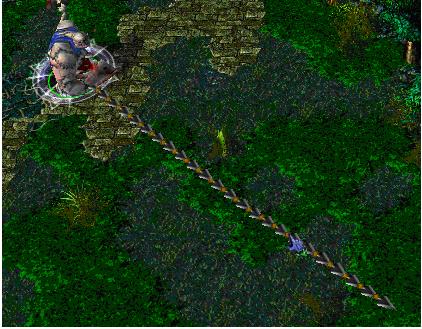http://acm.hdu.edu.cn/showproblem.php?pid=1698
Just a Hook
Time Limit: 4000/2000 MS (Java/Others) Memory Limit: 32768/32768 K (Java/Others)
Total Submission(s): 21930 Accepted Submission(s): 11005

Now Pudge wants to do some operations on the hook.
Let us number the consecutive metallic sticks of the hook from 1 to N. For each operation, Pudge can change the consecutive metallic sticks, numbered from X to Y, into cupreous sticks, silver sticks or golden sticks.
The total value of the hook is calculated as the sum of values of N metallic sticks. More precisely, the value for each kind of stick is calculated as follows:
For each cupreous stick, the value is 1.
For each silver stick, the value is 2.
For each golden stick, the value is 3.
Pudge wants to know the total value of the hook after performing the operations.
You may consider the original hook is made up of cupreous sticks.
For each case, the first line contains an integer N, 1<=N<=100,000, which is the number of the sticks of Pudge’s meat hook and the second line contains an integer Q, 0<=Q<=100,000, which is the number of the operations.
Next Q lines, each line contains three integers X, Y, 1<=X<=Y<=N, Z, 1<=Z<=3, which defines an operation: change the sticks numbered from X to Y into the metal kind Z, where Z=1 represents the cupreous kind, Z=2 represents the silver kind and Z=3 represents the golden kind.
#include<stdio.h> #include<string.h> #include<stdlib.h> #define N 100005 #define Lson root<<1, L, tree[root].Mid() #define Rson root<<1|1, tree[root].Mid() + 1, Rusing namespace std;struct Tree {int L, R, e, sum;int Mid(){return (L + R) / 2;} } tree[N * 4];void Build(int root, int L, int R) {tree[root].L = L, tree[root].R = R;tree[root].e = 1;if(L == R){tree[root].sum = 1;return ;}Build(Lson);Build(Rson);tree[root].sum = tree[root<<1].sum + tree[root<<1|1].sum; }void Update(int root, int L, int R, int e) {if(tree[root].L == L && tree[root].R == R){tree[root].e = e;tree[root].sum = (tree[root].R - tree[root].L + 1) * tree[root].e;return ;}if(tree[root].e != 0){tree[root<<1].sum = (tree[root<<1].R - tree[root<<1].L + 1) * tree[root].e;tree[root<<1|1].sum = (tree[root<<1|1].R - tree[root<<1|1].L + 1) * tree[root].e;tree[root<<1].e = tree[root<<1|1].e = tree[root].e;tree[root].e = 0;}if(R <= tree[root].Mid())Update(root<<1, L, R, e);else if(L > tree[root].Mid())Update(root<<1|1, L, R, e);else{Update(Lson, e);Update(Rson, e);}tree[root].sum = tree[root<<1].sum + tree[root<<1|1].sum; }int main() {int t, n, m, a, b, c, x = 0;scanf("%d", &t);while(t--){x++;scanf("%d", &n);Build(1, 1, n);scanf("%d", &m);while(m--){scanf("%d%d%d", &a, &b, &c);Update(1, a, b, c);}printf("Case %d: The total value of the hook is %d.\n", x, tree[1].sum);}return 0; }



